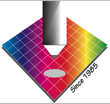John's journey as an author began unexpectedly in 1985. It was sparked by an incident at Erina High School, where he taught engineering. One day, as one of his students left the engineering room, he tripped on the stairs, causing his notes folder to fall open. In a twist of fate, the strong wind whisked away all of his engineering handouts.
Motivated by the incident, John established KJS Publications, named after his children Kellie, Jo, and Shaun. He compiled his engineering handouts into his first of eight innovative TAS workbooks as part of the initiative. His Engineering Studies Workbook, written in 1985, is arguably the most successful textbook in NSW and probably Australia!
John is an experienced teacher with a wealth of knowledge and expertise in various educational systems and subjects. Here is a summary of his qualifications and experience:
Teaching Experience:
- Over 50 years of experience as a TAS (Technological and Applied Studies) teacher in the Department of Education & Catholic systems.
- Specialisation in teaching Engineering Science/Studies for over 50 years.
- Part-time TAFE teaching experience in structural mechanics for 10 years.
- Currently teaching Engineering Studies Online with the Diocese of Lismore Online Education Centre.
Curriculum Development:
- One of the three writers of the original Engineering Studies Syllabus in 2000.
This indicates John's involvement in shaping the curriculum for Engineering Studies in New South Wales.
Coordinator and Administrative Roles:
- TAS Coordinator for 17 years at the St Peters College campus - Tuggerah NSW (formerly Corpus Christi Senior College).
Assessment and Examination Experience:
- Senior HSC marker for many years.
- Examiner for the Engineering Studies NSW Independent Trial HSC and Preliminary Year final examinations.
- This indicates John's involvement in assessing and grading student examinations at the senior level.
Authorship and Publication:
- Author and desktop publisher of 8 user-friendly and successful Workbooks and 6 Teaching Resources.
- These resources are designed for high school teachers and students in New South Wales, Victoria, Western Australia, Tasmania, and Queensland.
- The resources have been in circulation since 1985, highlighting John's experience and expertise in developing educational materials.
Overall, John has a comprehensive background in teaching, curriculum development, assessment, and publication. His expertise lies primarily in the field of Engineering Studies, with extensive experience across multiple educational systems.
What are the differences between these workbooks and text books?
The workbooks and resources offer several advantages over traditional textbooks. Here are the key differences:
- Concise and User-Friendly Presentation: Unlike textbooks that often contain complex and lengthy information, the workbooks present the content in a simple dot point format. This concise presentation helps students easily grasp the essential concepts without being overwhelmed by excessive prose.
- Sequenced Study Summary: These resources provide a structured study summary of each lesson, ensuring that students have a clear and organised understanding of the material covered.
- Reinforcement of Concepts: The student tasks included in the workbooks aim to reinforce the concepts and content covered in each lesson. This hands-on approach helps students solidify their understanding and apply what they have learned.
- Space for Annotation: The workbooks include dedicated space for students to annotate during lessons. This feature allows them to personalise their study summaries and make additional notes, enhancing their understanding and the revision process.
- Cost and Accessibility: The workbooks are available at a lower cost compared to traditional textbooks, making them more affordable for students. This affordability enables students to purchase their own copies for the two-year duration of their studies.
- Teacher Support: The resources also benefit teachers by providing them with content for lessons and lesson plans. This feature saves time and effort in preparing teaching materials and allows teachers to focus on teaching techniques and student engagement.
- Digital Lesson Presentation: The resources include digital lesson presentation materials, such as the Engineering Studies Teachers Classroom Presentation Resources (Resource #1) and Industrial Processes Resources (Resource #5) with short videos. These multimedia elements enhance the learning experience and make the lessons more engaging for students.
- Up-to-Date Information: The workbooks are regularly updated, ensuring that the content remains current and relevant. This feature helps students stay abreast of the latest developments in the field.
- Comprehensive Support: These resources cover not only course content but also provide essential information for the new 2023 syllabus Stage 4 Technology, Engineering Studies, Stage 6 Design & Technology and Stage 6 Industrial Technology, including major projects, examination rules, examination formats, examination techniques, and industry study components. This comprehensive support assists students in various aspects of their studies.
- Positive Feedback: The workbooks and resources have been well-received by Australian TAS teachers since 1985 and have found them extremely beneficial in their teaching practices.
Overall, the workbooks and resources offer a more focused, accessible, and cost-effective alternative to traditional textbooks. They provide students with a clear and concise study resource while assisting teachers in lesson planning and content delivery.

A Blast From the Past - 1980s
